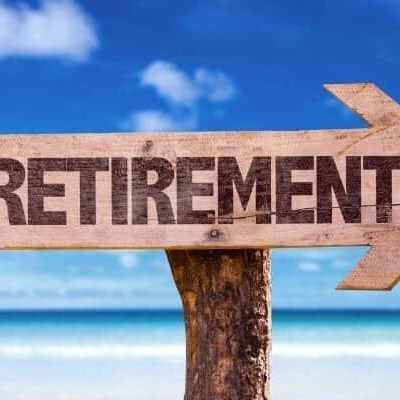CSRS and FERS Retirement: Lump-Sum Credit Payments to Eligible Beneficiaries

According to the Office of Personnel Management‘s (OPM) CSRS and FERS Retirement Handbook (Chapter 75), federal agencies must notify the survivors of deceased former employees or retirees to contact OPM directly for information on their potential entitlements. However, government authorities generally never contact surviving family members.
This column’s purpose is to clarify the lump amount credit, the regulations governing the payment of the lump sum credit to eligible surviving family members, and the processes eligible surviving family members must take to apply for the lump sum credit.
Lump-Sum Credit Payments for Former CSRS and CSRS Offset Employees
The lump sum credit for late former CSRS or CSRS Offset employees is comprised of the unrefunded portion of one or more of the following:
- CSRS retirement deductions – these are equal to 7% for a CSRS employee (0.8% for a CSRS Offset employee) that was withheld biweekly from the employee’s salary.
- Redeposits of refunds previously paid.
- Deposits for temporary (non-deduction) service.
- Deposits for post-1956 military service.
- Interest on retirement deductions through December 31, 1956.
- For an employee or former employee who dies with fewer than five years of creditable service interest paid to the date of separation or transfer to a job not covered by CSRS, in any sum covering over one year of service.
Remember the following:
- Contributions to the Voluntary Contribution Program (VCP) aren’t included in the lump-sum credit. Nonetheless, if an employee dies while in employment or after departure from duty, all VCP payments made by the deceased employee plus interest will be reimbursed individually in a lump sum according to the precedence sequence.
- The lump-sum credit could have been paid to an employee or former employee while they were alive in one of three ways:
(a) A refund payment to a separated employee not entitled to a CSRS annuity;
(b) A lump-sum payment under the alternative annuity provision; or
(c) through the payment of a CSRS annuity.
CSRS Lump-Sum Credit: Payment Rules
The standard rule for payment of CSRS lump-sum credits is as follows: Upon the death of a CSRS/CSRS Offset employee, if there’s no survivor entitled to a monthly CSRS survivor annuity, the full lump-sum credit in the CSRS retirement fund is paid to the individual(s) entitled in the regular order of precedence (see above).
Suppose a CSRS/CSRS Offset employee dies in service and a CSRS survivor annuity is payable to the person’s spouse, ex-spouse, or child. In that case, the individual entitled to a lump-sum credit in the order of precedence might not be given the lump-sum credit. However, they may be paid that fraction of the lump-sum payment consisting of the following:
- Retirement deductions are withheld from the employee’s salary after the employee becomes eligible for the maximum annuity.
- Partial redeposits of previously paid refunds unless the surviving annuitant made the redeposit payment.
- Partial deposits for temporary (non-deduction) service were done after September 30, 1982, unless the survivor annuitant made the payment of the deposits.
- Partial deposits for military service after 1956.
- Completed post-1956 military service deposits where the military service isn’t utilized to calculate the survivor benefit.
A CSRS lump-sum credit payment is subject to any fully certified and timely request for the recovery of a valid debt due to the U.S. government. Upon the death of a CSRS Offset or former employee, the amount of a lump-sum payout representing an employee’s actual contributions (including partial deposits and redeposits) isn’t subject to federal and state income taxes. However, any interest paid on these contributions is taxable in the year the refund is issued.
Submitting a CSRS Lump-Sum Credit Application
Applicants for the CSRS lump-sum credit must comply with the following requirements:
- Complete form SF 2800 (Application for Death Benefits) (https://www.opm.gov/forms/pdf fill/sf-2800.pdf) and attach any other documents and/or proof that the application or circumstances need.
- Attach a certified death certificate copy.
- Send the completed application to:
a. the employing agency if the agency hasn’t yet sent the employee’s data to OPM; or
b. OPM directly if the employing agency has already sent the employee’s information to OPM. Office of Personnel Management P.O. Box 45 Boyars, Pennsylvania 16017-0045.
Responsibility of the OPM
The OPM determines whether benefits are payable for both the CSRS lump-sum credit and the FERS lump-sum credit. Depending on the benefit and the specific circumstances, OPM may need the applicant to submit further proof.
Contact Information:
Email: [email protected]
Phone: 8889193252
Popular posts

TSP Contributions Are Changing—Here’s...
Key Takeaways The TSP...

FEHB Premium Hikes Have...
Key Takeaways FEHB premiums...
Free Retirement Benefits Analysis
Federal Retirement benefits are complex. Not having all of the right answers can cost you thousands of dollars a year in lost retirement income. Don’t risk going it alone. Request your complimentary benefit analysis today. Get more from your benefits.
I want more


